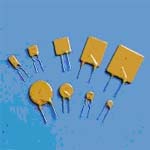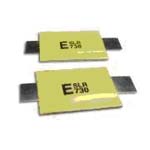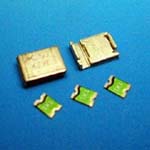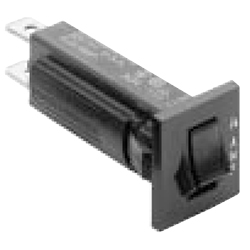|

Product Links 
|
|

Inside SRI

|
| SRI-Newsletter |
 |
Subscribe to our newsletter to receive monthly specials, manufacturer's feature, and electronics news via email. |
|
 |
|
See Our latest release of SRI-Newsletter here
 |
|
View Our List of Archived Newsletter Articles
 |
|

SRI Links

|
|
Visit our Sister Site,

Distributor of
Industrial Products
| |
|
Web Search ..
Powered by;

|
|
 |
 |
 |
 |
 |
In the past, a standard fuse accomplished protecting circuits from heat or excessive current, but in many of today's applications requiring resettable devices like the conventional such as polymeric positive temperature coefficient (PPTC) devices are the preferred solution. Unlike others, the PPTC device can help provide both overcurrent and overtemperature protection in one convenient package, while offering designers the option of placing resettable protection on the primary side of the transformer, hence replacing two components with a single device. These devices do not require replacement after a fault event. Once the problem is eliminated and the power is off, they return the circuit to the normal operating condition, which reduces the cost of service and replacement. Although "resettable fuse" is a common term used in describing PPTC devices, they are actually resistors that change resistance based on temperature (thermistor) and are not fuses. It is important for users and designers to recognize the difference because hazardous voltage may still be present.
PPTC devices respond to high temperature or current by increasing resistance to current flow. This reduces current flow to sensitive equipment to a minimal level until the fault can be cleared. They do not break the circuit permanently like a blown fuse does. Deciding which applications uses which device depends on whether the restoration of normal operation power poses a safety hazard or if service is required on the system before power is restored. Some of the critical parameters to consider when designing PPTC devices into a circuit include device hold and trip current, the effect of ambient conditions on device performance, device reset time, leakage current in the tripped state, and automatic or manual reset conditions. Automatically restoring power to an alarm system would be an application where a PPTC device could be suitable because no inherent danger exists, while automatically restoring power an oven probably wouldn't because of the fire hazard.
PPTC have been compared to thermal fuses in applications involving transformers. They were shown to "trip" faster, at lower temperatures, and with less over current making a dramatic difference in damage to the tested systems. This had made them especially desirable in the telecommunications industry and networking applications.
PPTC devices are available in a variety of voltages, operating currents, form factors, and manufacturers. Check your distributor for pricing, availability, and data sheets. System testing is the best determining factor when selecting the type of circuit protection device.
 |
 |
 |
| PPTC Resettable Fuse |
Axial Leaded Strap Type Fuses |
PPTC Surface Mount |
|
**Specifications subject to changes**
|
|
 |
|

Product Spotlight
 |
|

|
Snap-in mounting, Push-to-reset Circuit Breaker Relay
$0.00
MORE INFO

|
|

Sponsored Ads
 |
|